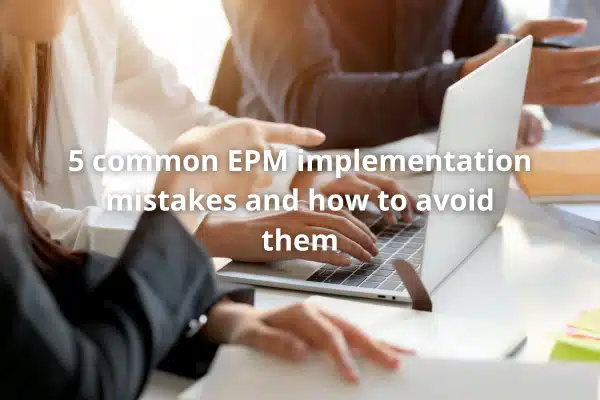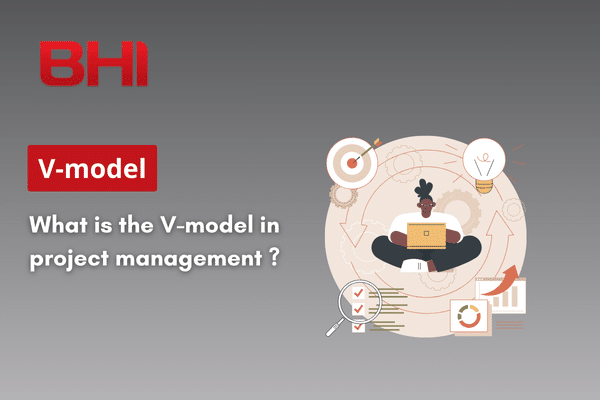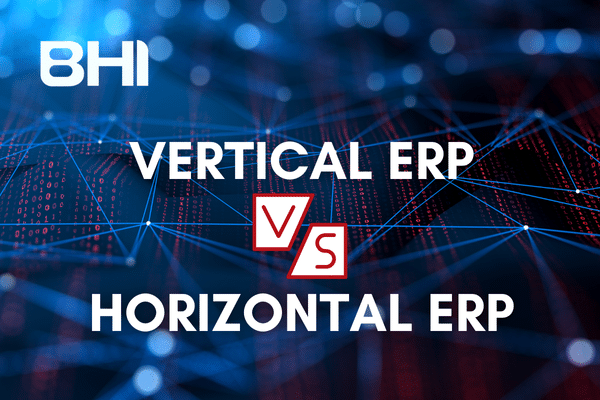Enterprise Performance Management (EPM) has become an essential tool for companies seeking to optimize their processes, improve their forecasts or drive their performance through reliable, usable data. Yet, despite its many advantages, implementing an EPM system is far from straightforward. Many companies make mistakes that can jeopardize the success of the project.
In this article, we’ll take a look at the 5 most common mistakes when implementing EPM, and explain how to avoid them to maximize your chances of success.
1. Lack of a clear vision and defined objectives
One of the most common mistakes is to embark on an EPM project without a clear vision of the expected results. All too often, companies implement tools without precisely defining the objectives to be achieved. This lack of direction can turn a strategic project into a simple technological implementation, with no real impact on the organization’s overall performance. For example, some companies adopt an EPM system in the hope of improving their financial processes, but don’t know whether this means reducing closing times, increasing forecast reliability or optimizing budget management.
Consequences
The absence of defined objectives leads to a dispersal of effort and resources. The teams involved may lose sight of the project’s purpose, resulting in partial or ineffective adoption. In the end, the company runs the risk of not achieving the expected results, and of perceiving the project as a failure.
The solution
To avoid this problem, it’s crucial to take the time to clarify your needs and translate them into measurable objectives. A well-defined vision enables you to focus your efforts on essential priorities and align the project with the organization’s strategic issues. For example, if your priority is to reduce reporting times, this will guide your technological and methodological choices from the outset.
2. Choosing a solution unsuited to your business needs
Another major obstacle lies in choosing an EPM solution that doesn’t correspond to your organization’s real needs. With the multitude of software packages available on the market, it’s easy to be seduced by sophisticated tools that don’t integrate well with existing systems, or that offer unnecessary functionality. On the other hand, opting for a solution that is too limited can hinder your company’s future growth. For example, a fast-growing organization could quickly run out of capacity if it invests in a tool with limited scalability.
Consequences
Choosing the wrong solution can lead to significant cost overruns, due to the purchase of unnecessary functionality or costly modifications to integrate the software into your existing infrastructure. What’s more, an ill-adapted solution can frustrate users, slow adoption and reduce the benefits expected from the project.
The solution
To avoid this, it’s essential to involve all stakeholders right from the start of the project, whether IT teams, financial managers or strategic decision-makers. A thorough needs analysis, combined with a rigorous evaluation of available solutions, will enable you to opt for a tool that perfectly meets your current expectations, while offering the flexibility needed to support your future growth.
3. Ignoring the importance of change management
Implementing an EPM system is not just a matter of deploying technology, it also involves transforming internal processes and work habits. Unfortunately, many companies underestimate the importance of change management. Employees, often attached to their usual methods, may perceive EPM as an additional constraint, which slows down its adoption.
Consequences
Without adequate support, users may reject or ignore the new system. This can lead to low adoption, inefficient processes and demotivated teams. Ultimately, the investment in the project may not produce the expected results, leaving an impression of failure.
The solution
To overcome this resistance, it’s essential to communicate clearly the benefits of the project from the outset. By explaining how EPM will simplify repetitive tasks, improve access to data and enable you to concentrate on high value-added analyses, you can get your teams on board. In addition, training sessions tailored to each user profile will ensure that everyone feels at ease with the new tool. Last but not least, appointing internal referents, capable of answering questions and promoting change, will greatly facilitate the integration of the system into daily practices.
4. Relying on poor-quality data
An EPM system, no matter how effective, is totally dependent on the quality of the data supplied to it. If the data is inaccurate, obsolete or poorly structured, the analyses produced will be biased and unusable for making informed decisions. Unfortunately, data quality is often overlooked during implementation, compromising the credibility of the system from the outset.
Consequences
Poor data quality leads to erroneous analyses, which in turn can lead to inappropriate strategic decisions. In addition, users quickly lose confidence in the tool, reducing its adoption and effectiveness.
The solution
To avoid this situation, it is essential to audit existing data before integrating it into the EPM system. This audit will identify any gaps and enable processes to be put in place to guarantee their reliability. At the same time, establishing data governance rules will ensure that data remains usable over the long term. This includes regularly updating information, systematically validating it and centralizing it on a single platform. By adopting a rigorous approach from the outset, you can ensure that the analyses and reports produced by the EPM system accurately reflect the reality of your organization.
5. Underestimating the need for ongoing maintenance
Finally, many companies treat EPM implementation as a one-off project, forgetting that needs and technologies evolve rapidly. Without regular monitoring, the system can become obsolete within a few years, necessitating a costly overhaul. For example, a company that does not schedule regular updates risks missing opportunities for improvement, or ending up with a tool that is incompatible with its new processes.
Consequences
Lack of maintenance can reduce system efficiency and slow company growth. Failure to adapt the system to new needs can also lead to a growing gap between the tool and operational processes, eventually rendering the system unusable.
The solution
To avoid this, it’s important to adopt a proactive approach right from the planning stage. Set aside a budget and a team dedicated to system maintenance and updates. Make sure that new functionalities proposed by the software publisher are regularly integrated and tested to maximize their impact. At the same time, constantly monitor the system’s performance and adjust it to your organization’s emerging needs. This approach ensures that EPM remains a strategic, high-performance tool over the long term.
Conclusion
Implementing an EPM is an ambitious undertaking that can profoundly transform a company’s performance management. However, it requires careful planning and attention to common pitfalls. By defining clear objectives, choosing the right solution, preparing your teams for change, guaranteeing data quality and anticipating system evolution, you maximize your chances of success.
Would you like to make a success of your EPM project, or do you need advice on overcoming a specific obstacle ? Contact us today to benefit from tailor-made support. Our experts are on hand to guide you every step of the way and help you make the most of your performance management tools.

















